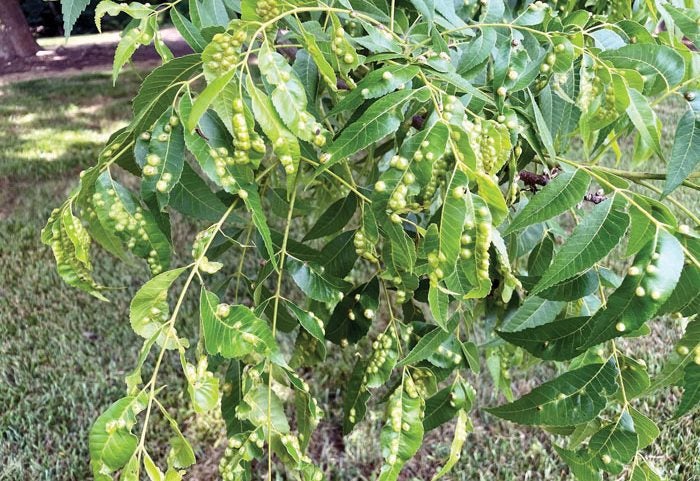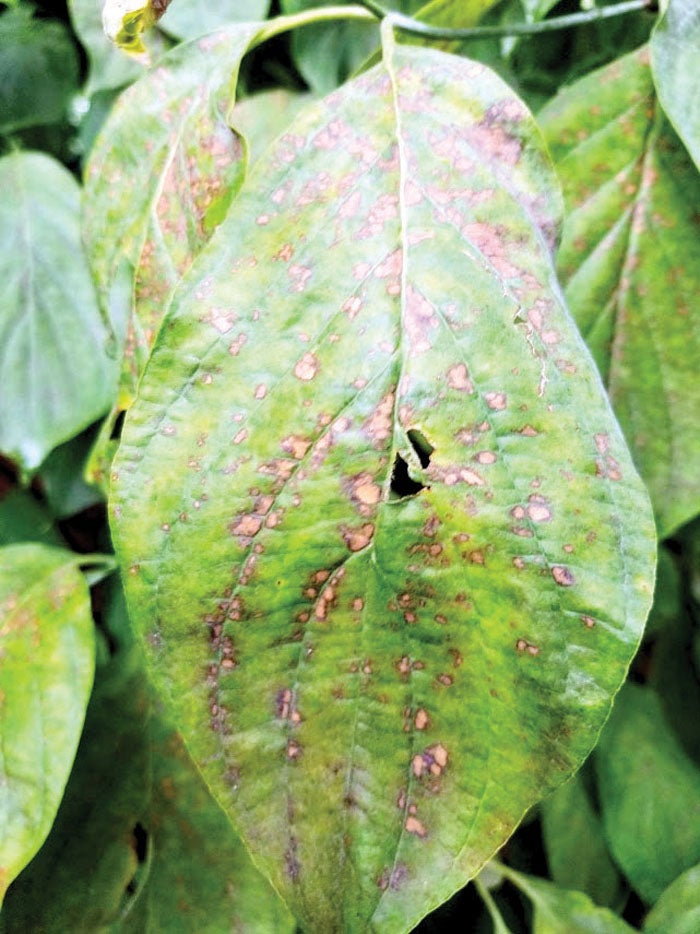Tree diseases are on the rise
Published 12:00 am Sunday, June 13, 2021

- Insect galls on pecan leaves will damage but not kill the tree.
Shade trees are extremely important to most landscapes, providing aesthetic and functional design elements. Landscapes would be void of shade, color and design without trees. Understandably, homeowners become frantic when their shade trees fall victim to disease or insect pests.
With increased rainfall and high humidity, foliar diseases are increasing throughout the county. The most common foliar diseases are caused by parasitic fungi. Warm days and cool nights provide perfect climatic conditions for development of fungal diseases.
Most maple trees and native dogwoods are now very susceptible to foliar diseases. Anthracnose is a disease that causes black splotches on the leaf margins and veins of maple and dogwood leaves as well as ash and sycamore and other broadleaf shade trees. Small black spots eventually trace rain drop patterns where the fungus has invaded the leaf. As the leaves eventually becomes fully engulfed, they turn black and fall off. A maple that has anthracnose appears to be scorched by fire.
Dogwood leaves are infested with spot anthracnose. Spot anthracnose is the same disease that causes the blooms to become spotted and discolored earlier during spring bloom. Dogwood leaves may retain chocolate-colored spots through the duration of summer.
Anthracnose is not selective in which tree may be infected. A single tree or an entire neighborhood’s trees may be affected by this disease.
Leaf galls are also prevalent throughout the county. Galls are grotesque growths splotching the leaves and limbs. as a result of damage from tiny wasps. Gall wasps resemble mosquitoes and do not sting. Tiny immature insects or larvae habitat the centers of these structures. Gall wasps are very selective as to the species attacked. Oaks, hickories, pecan and maple leaves are often attacked annually by gall wasps.
It is impractical to spray large shade trees to control anthracnose or leaf galls. These pests are more of a nuisance than a detriment to the tree’s growth and development. Warm, dry weather of the summer discourages the continuous spread of anthracnose.
Elimination of fallen leaves and leaf galls reduces future infectious spores and over wintering immature insects. Persistent sanitation reduces future pest populations. For more information on leaf galls and anthracnose, go to https://content.ces.ncsu.edu/galls-on-oaks and https://hgic.clemson.edu/factsheet/dogwood-diseases-insect-pests/
Darrell Blackwelder is the retired horticulture agent and director with the North Carolina Cooperative Extension Service in Rowan County. Contact him at deblackw@ncsu.edu.


